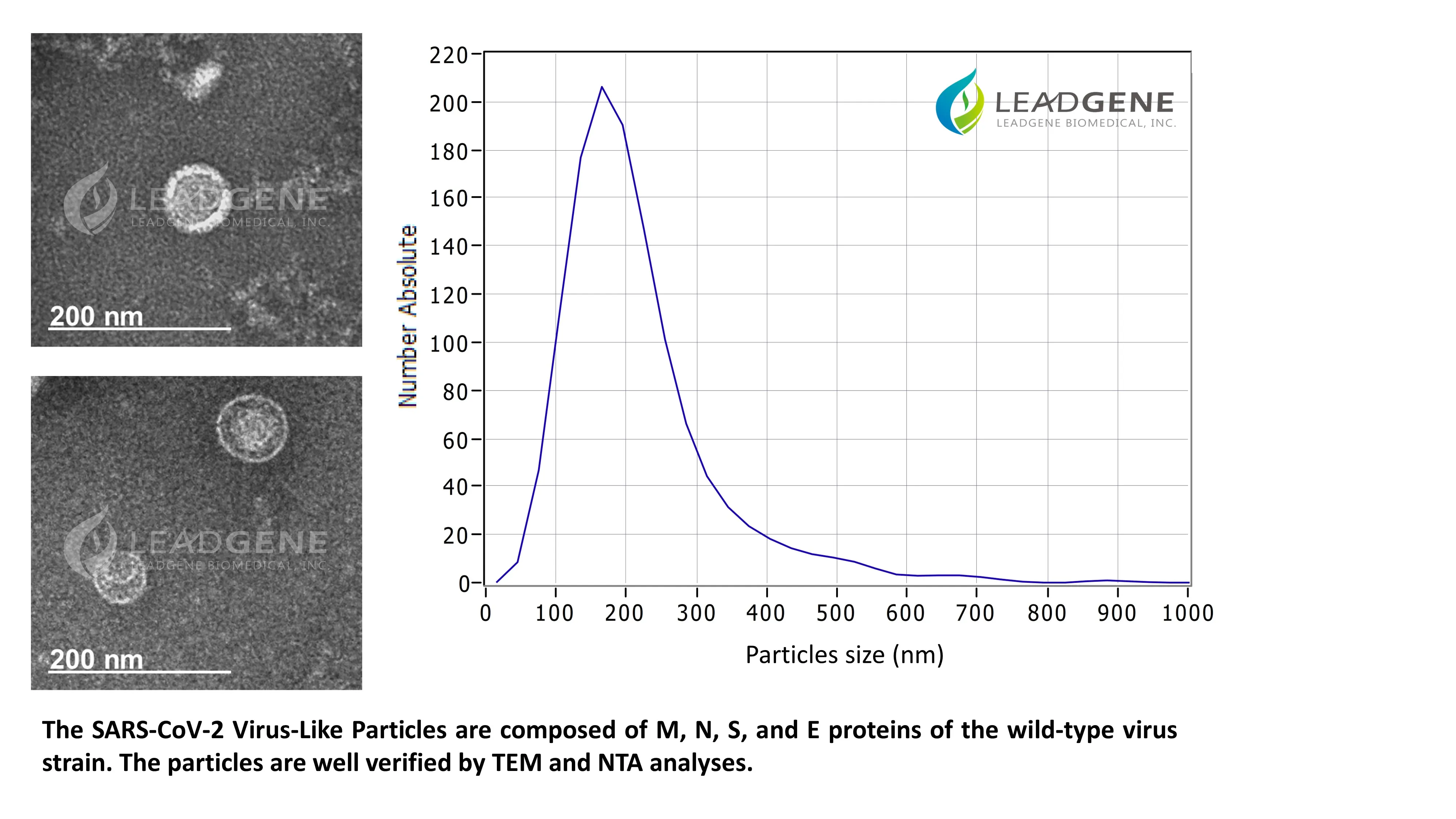Quantitative reverse transcription PCR (RT-qPCR) is currently the most sensitive method for identifying SARS-CoV-2 infections, but it is expensive and takes a long time. Serological tests, on the other hand, are less accurate but cheaper and faster to perform. To address these limitations, Rebecca et al. reported a non-PCR technique for detecting SARS-CoV-2, using a nanosensor made of single-walled carbon nanotubes (SWCNTs) coated with the ACE2 protein (1). When the virus's spike protein or virus-like particles (VLPs) bind to the ACE2-SWCNT nanosensor, it emits fluorescence, enabling quick detection of the virus. This technology could be used to help monitor the spread of COVID-19 and potentially for diagnosing other diseases.
Leadgene Biomedical supplied high concentrations of VLPs, which are produced in mammalian cells and composed of four structural proteins, for use in this research.
The VLPs are approximately 150-200 nm in size and have an average concentration of 1.0E+10 particles/mL.
Click here for more details.

Reference: Nano Lett. 2021 Mar 10;21(5):2272-2280.
